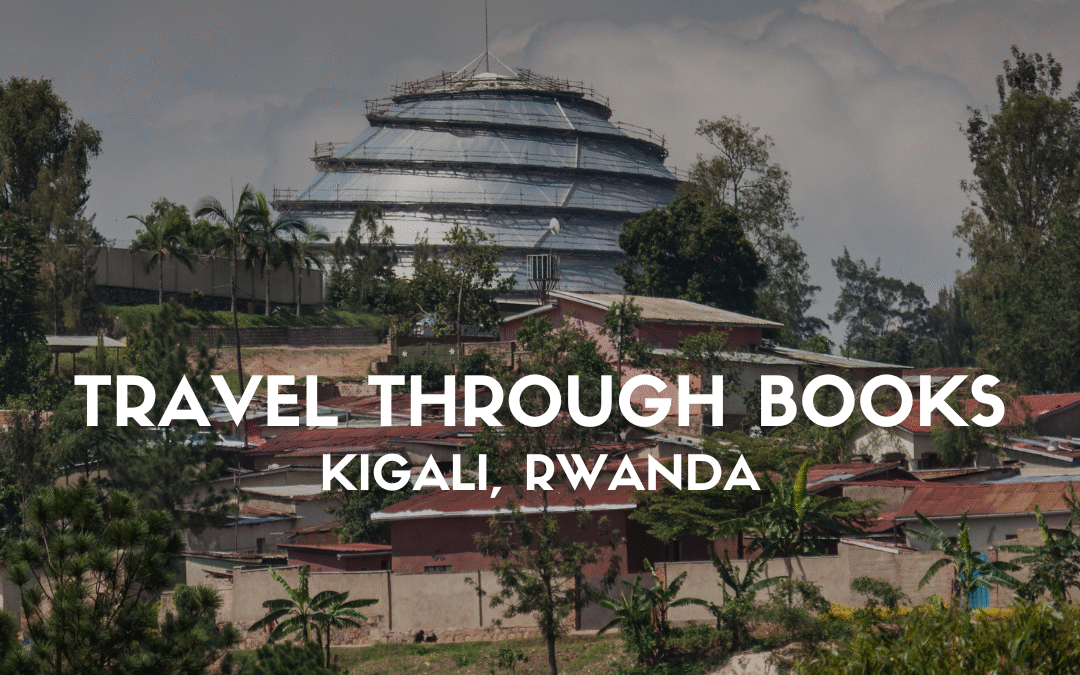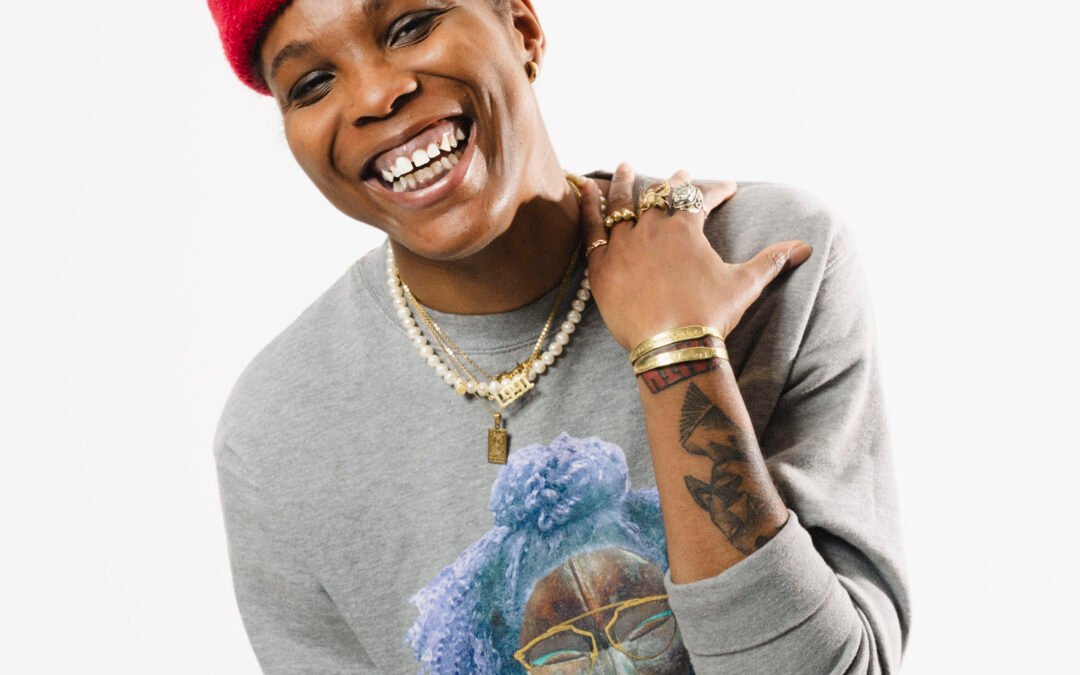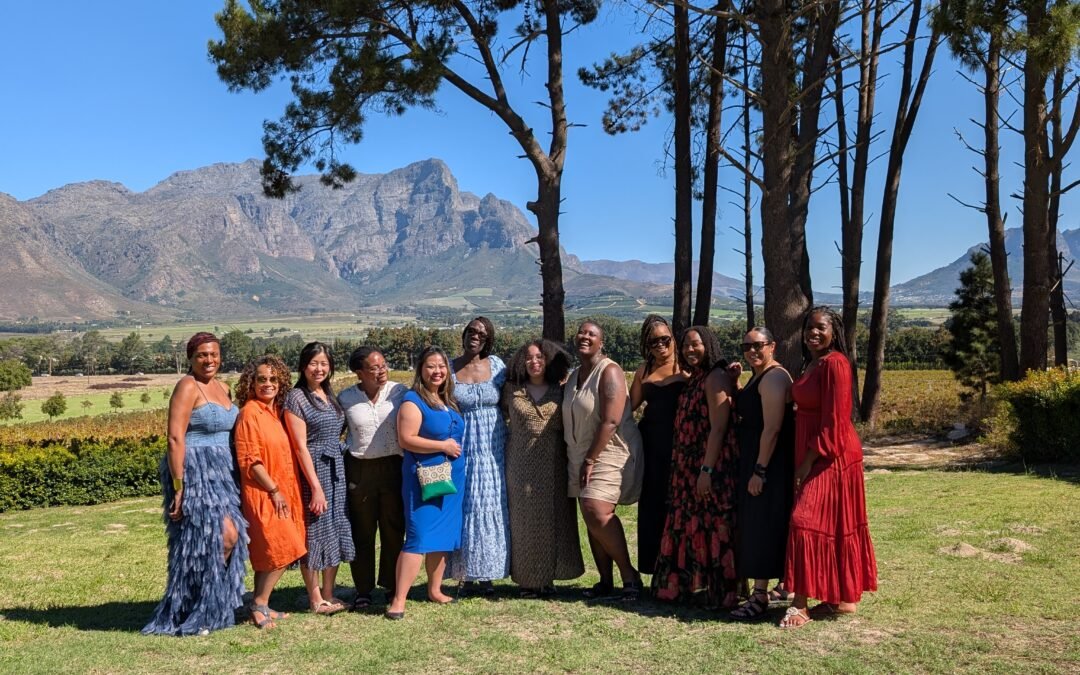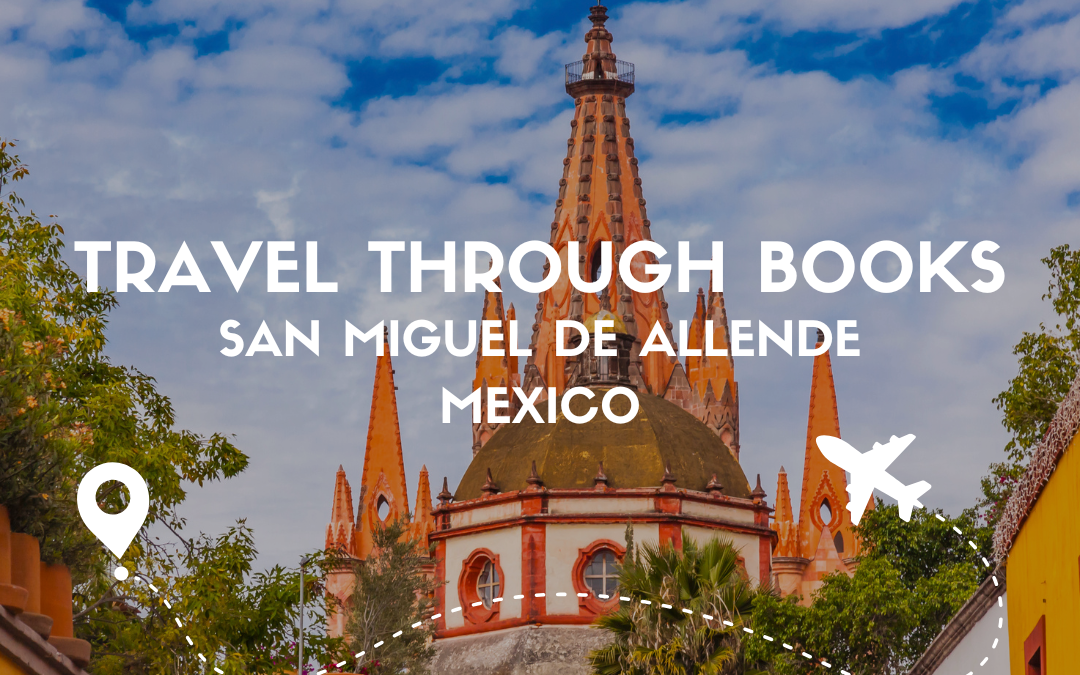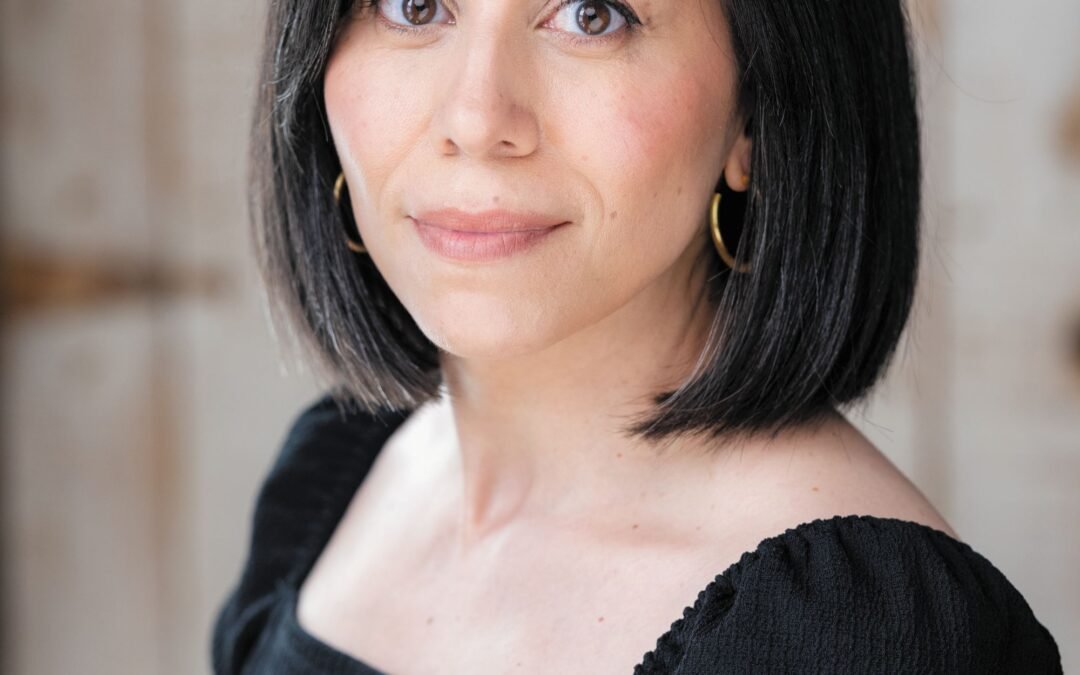Panama Unveiled: A BOOKED Trips Adventure Inspired by “The Great Divide”

Welcome to Panama! We just wrapped up an incredible journey with 13 amazing women from the U.S., Canada, and Kenya, all inspired by Cristina Henríquez’s powerful novel, “The Great Divide.” Get ready for a deep dive into our unforgettable experience!
First Things First: What’s BOOKED Trips?
We’re all about crafting meaningful, book-inspired adventures for women who crave more than just a typical vacation. Think immersive, small-group travel that fosters genuine connections and a sense of belonging. We bring stories to life, transforming pages into real-world experiences. Forget the tourist traps—we’re here for authentic, transformative journeys.
At BOOKED Trips, we believe travel should be a narrative, weaving together the author’s vision with the vibrant stories of the people and places we encounter. Before each trip our travelers receive a BOOKED box with our selected book, a curated playlist, and items from small businesses around the world that connect to the country we’re visiting. Here’s what was inside our Panama BOOKED Box.
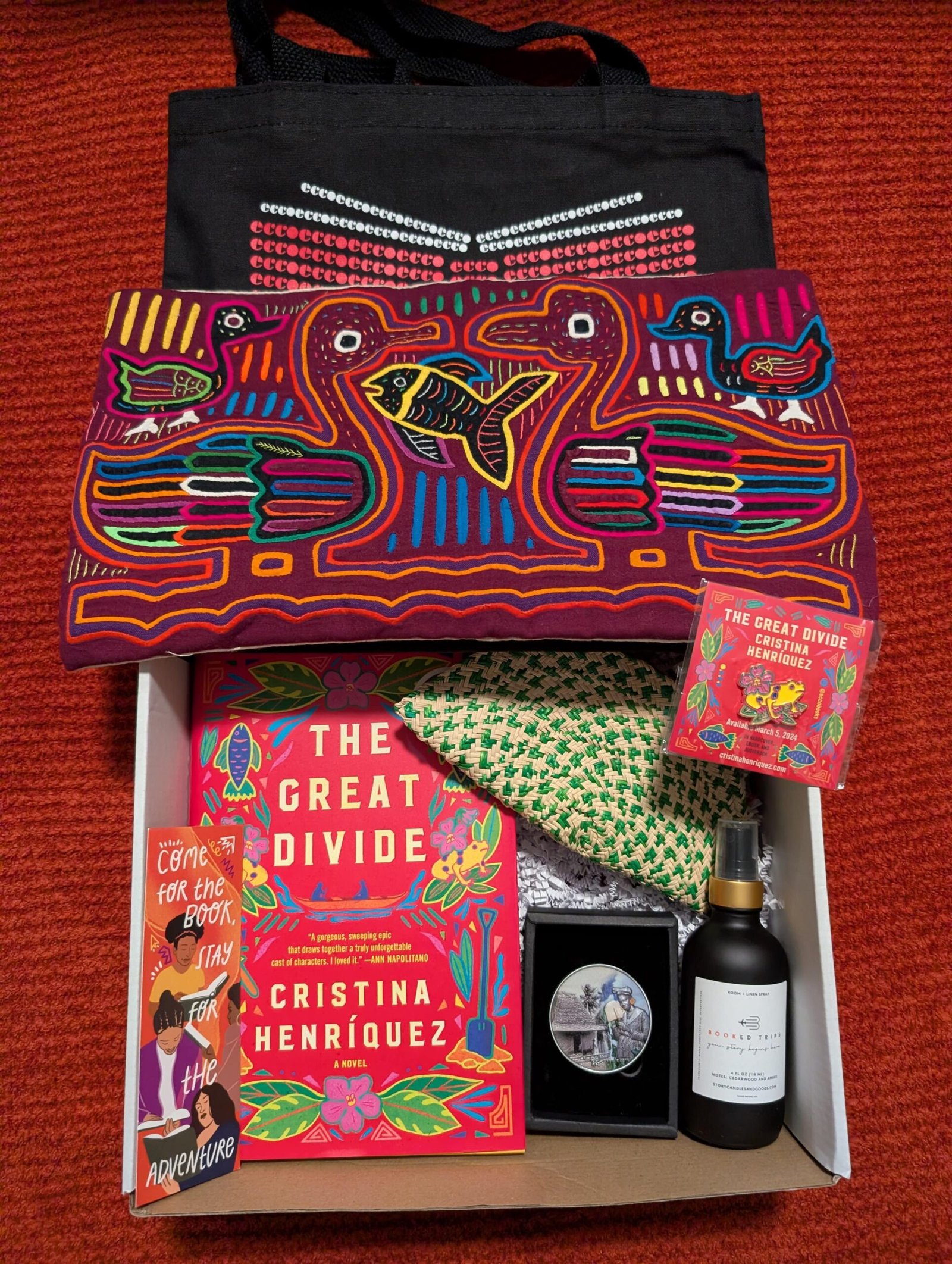
- A signed copy of “The Great Divide” by Cristina Henríquez purchased from East City Bookshop, a woman-owned, community-focused bookstore in Washington, DC.
- A mola pillow cover from the Guna Yala indigenous community in Panama. This mola design is also reflected on the book cover.
- A woven wallet made by artisans from the Coclé province.
- A tote and “The Great Divide” themed pin from Ecco Books, an imprint of Harper Collins.
- A limited edition commemorative coin designed by Panamanian artist Giana de Dier, honoring the Afro-Antillean women who migrated from the Caribbean to support work on the Panama Canal.
- A BOOKED Trips custom bookmark designed by Pretty in Ink Press and room spray designed in collaboration with Story Candles & Goods, both Black woman-owned companies.
- Our trip playlist with sounds of Panama
On the ground our trip activities and meals are inspired by quotes and scenes from our selected book, taking travelers from the page to the place.
ABOUT THE BOOK
Our trip is inspired by “The Great Divide” by Cristina Henríquez, a sweeping historical fiction book set in early 1900s Panama during the American construction of the Panama Canal. On its face it’s a book about the Canal, but underneath is a story of the many lives and communities that were irreparably changed by man’s insatiable desire to conquer the land and other people. This is a particularly timely read as we navigate the current U.S. Trump administration’s efforts to impede Panamanian sovereignty and ownership of the canal.
You can see our conversation with the author Cristina Henriquez and her father in our book chat recap here. From March 6-11th we took travelers through an immersive experience of Panama City, Colón, Portobello, Venas Azules and the land of the Emberá indigenous community inspired by a different quote from the book each day. Keep reading for a recap of each day of the trip.
DAY 1: OPENING DINNER AND BOOK DISCUSSION

“Maybe what mattered…was not how big or how small her mother’s world was, but that her mother had managed to keep it at all. It must have been no trifling thing to carve out a space of her own, to protect it and hold within it the people she loved.” – pg. 314
We start all of our BOOKED Trips experiences with an opening dinner and book discussion because food is a powerful way to celebrate culture and identity. Food is the common thread that we all share.
Our opening dinner and book discussion was hosted at La Tapa Del Coco, a locally owned Panamanian restaurant led by chef and Founder Isaac Villaverde whose mission is to preserve the Afro-Panamanian culinary heritage and culture.
This was the perfect restaurant to start our trip and highlight themes from our trip read which highlights the influences of Caribbean and Afro-Panamanian culture on the development of the Panama Canal. We chose a quote from Ada Bunting about her mother who lives in Barbados to represent the many unspoken of Afro-Caribbean women who worked to support the building of the canal.
DAY 2: MERCADO DE MARISCOS FISH MARKET VISIT & COOKING CLASS
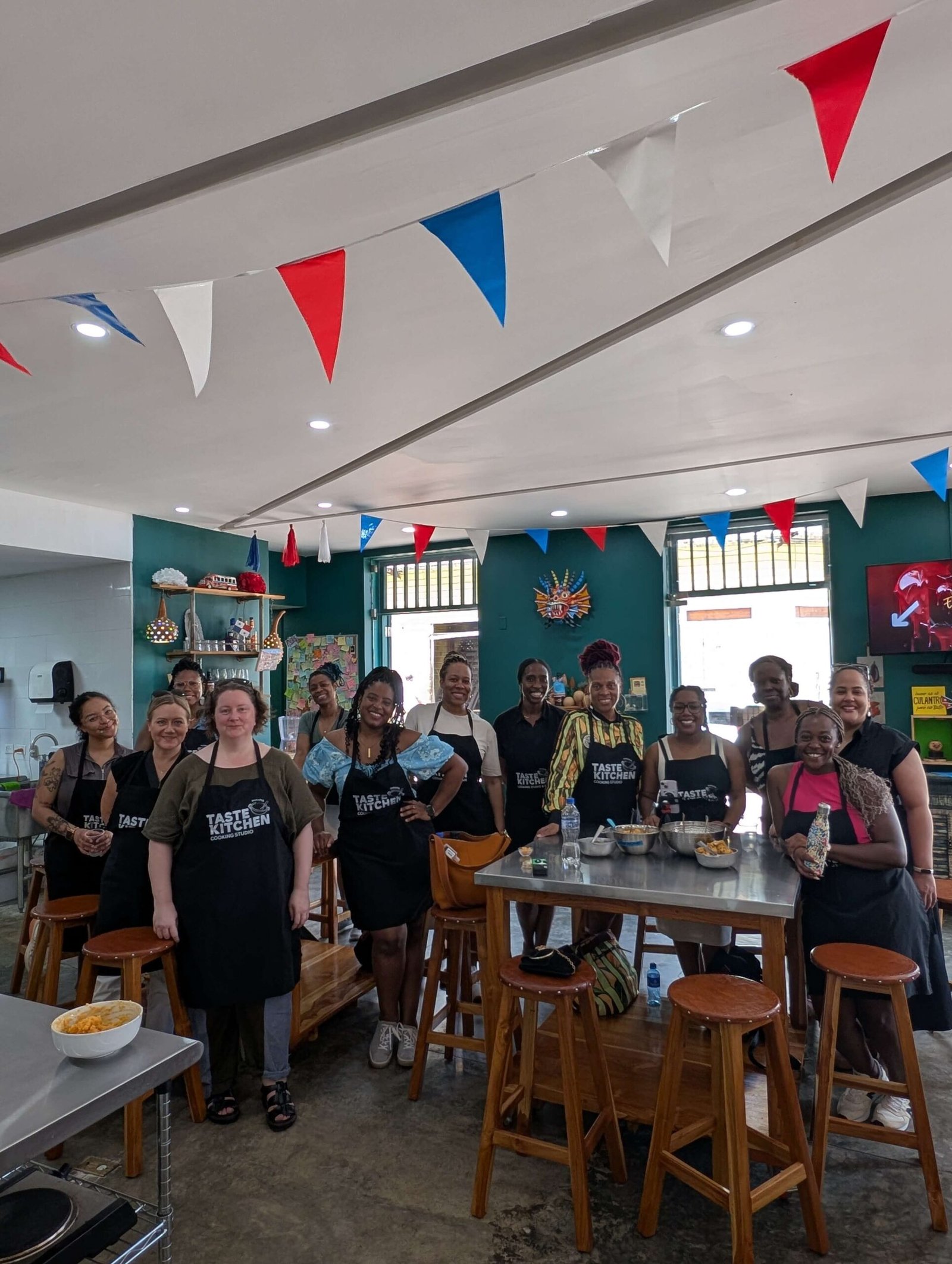
“At the fish market, Joaquín stood up on a crate one afternoon and waved a newspaper in the air. The provisional junta had published something they were calling the Manifesto on Panamanian Independence…But Francisco believed he understood something they they did not. To be independent and to be sovereign were two different things.” – pg. 140
Inspired by the quote above, our group started with a visit to Mercado de Mariscos, the local fish market, with Ana the owner of Food Tours Panama. We tried ceviche and cevichelados (beers with ceviche), and grabbed fresh fish for our cooking class.
After, we participated in a hands-on cooking class making tamales at Taste Kitchen Cooking Studio, a woman-owned cooking studio and cafe. Then we enjoyed a thorough coffee education and pour over experience with Laury, owner of Make A Coffee Bar which is co-located in Taste Kitchen.


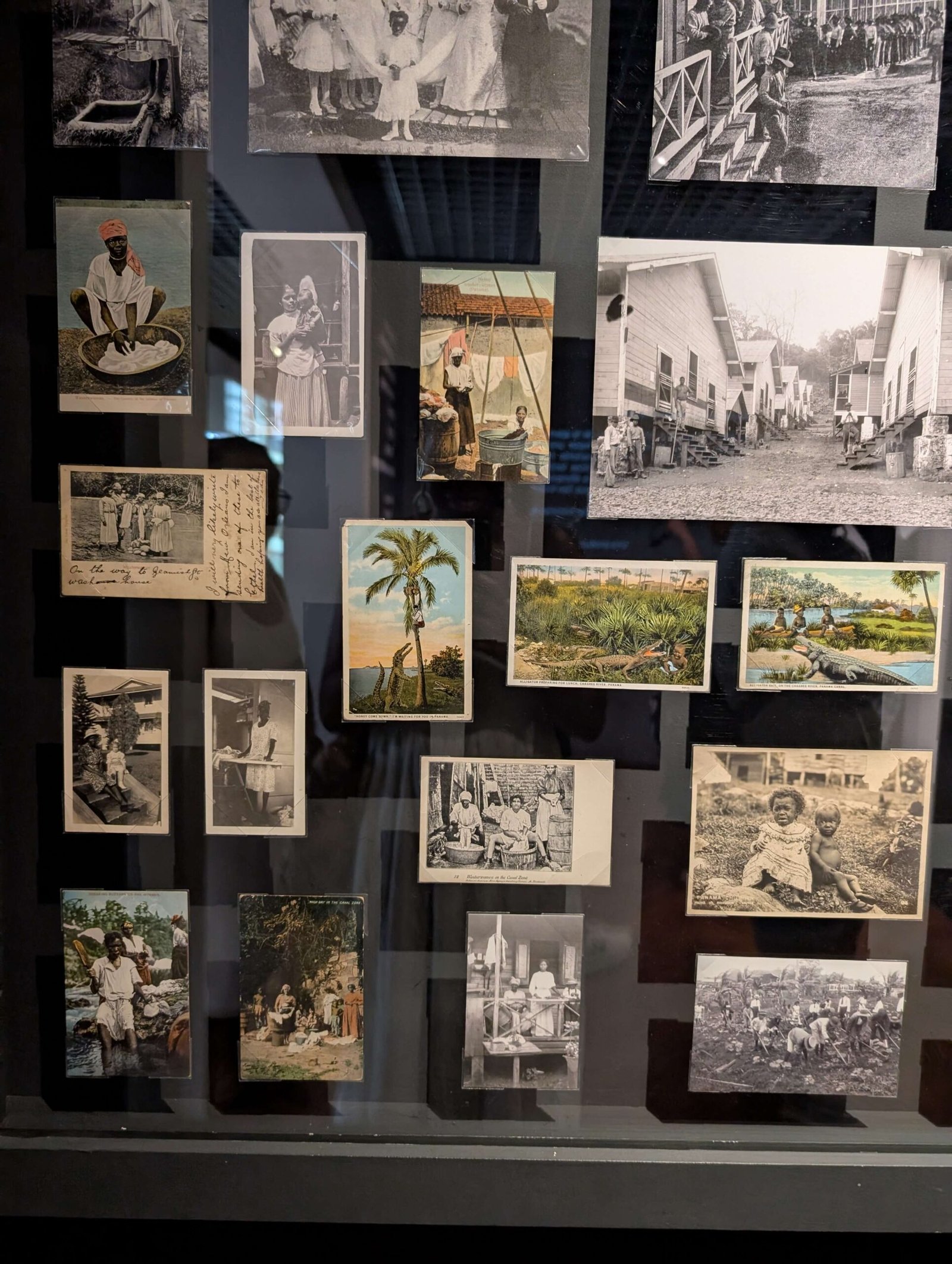
With bellies full we visited the Panama Canal museum with our Afro-Panamanian guide Giovanni to learn more about the history that grounded The Great Divide.
DAY 3: Colón Food Tour & Panama Canal Visit
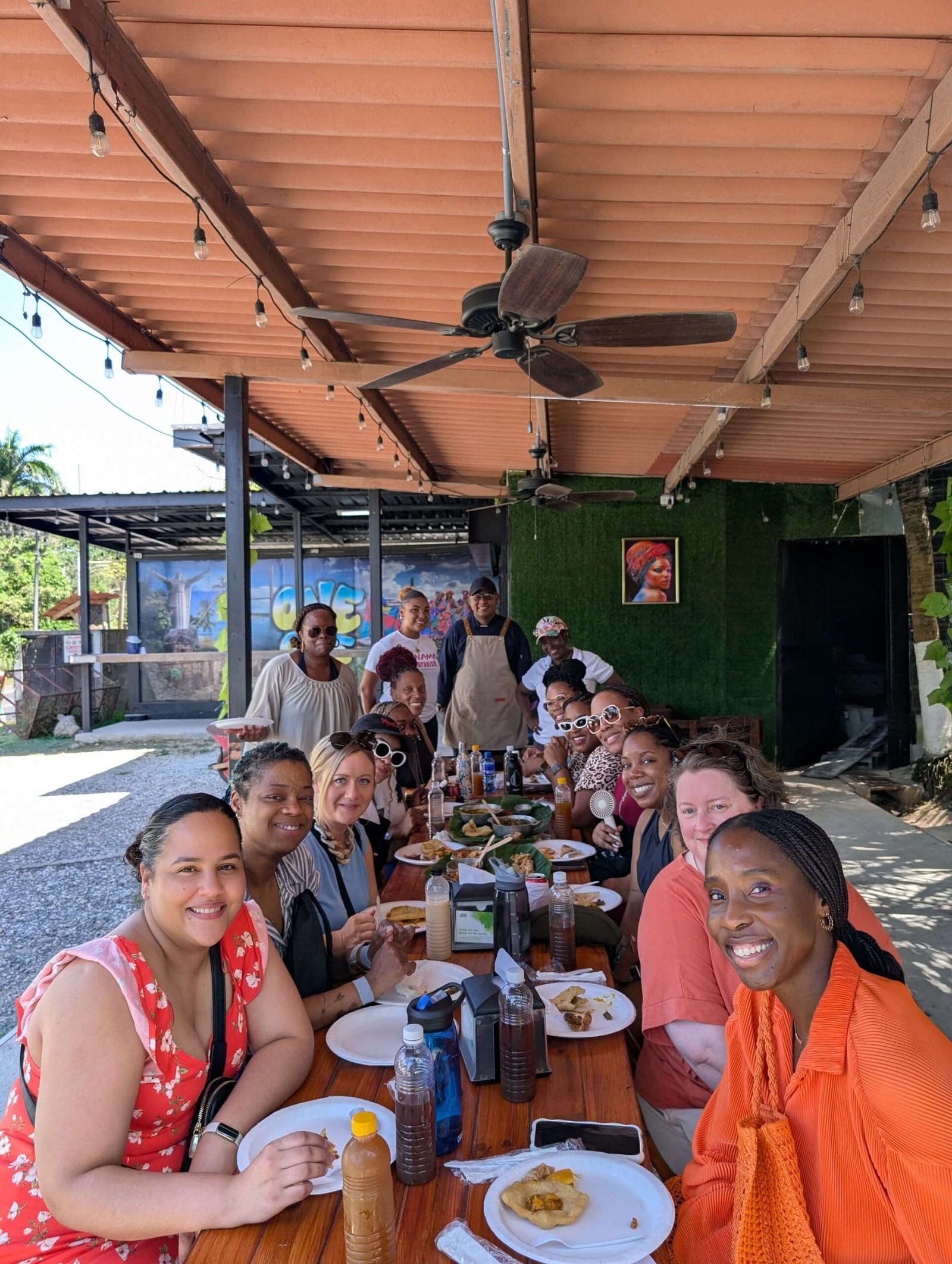
“La Boca was Francisco’s name for the canal, how he thought of it in his mind: a mouth, a gaping hole, ravenously consuming everything in its path.” -The Great Divide by Cristina Henríquez
Colón is where The Great Divide opens and we meet Ada Bunting, John and Marian Oswald. We did a play on the quote above as inspiration for our food experience. Colón is the capital of Colón Province, in Panama. It sits on the Caribbean coast, at the entrance to the Panama Canal. Our group went beyond the typical tourist path to learn about this Afro-Panamanian City right from Angelys, a local resident who is proud of her city.
We did various food tastings from roadside restaurants, to street food, a market, and a visit to a local traditional restaurant to learn more about Colon’s historical influence on the building of the Canal and Panamanian culture through food. We tried chicheme, a cinnamon and corn breakfast porridge with Armando, had a picada spread at One on One with the owner Mateo, enjoyed shaved ice, seafood soup and rebanada de bon sin queso, a sweet bread that represents the cultural melting pot that Panama is.
Later we visited the actual Panama canal to understand more about the engineering that went into the building of the Canal. We watched as a massive ships navigated the canal locks and gain a deeper understanding of the canal’s historical significance. Though less exciting than we expected, there was an annoucer who called out the various nationalities of the visitors in attendance and tried to keep things high energy as the boats made their slow entrance into the Canal.
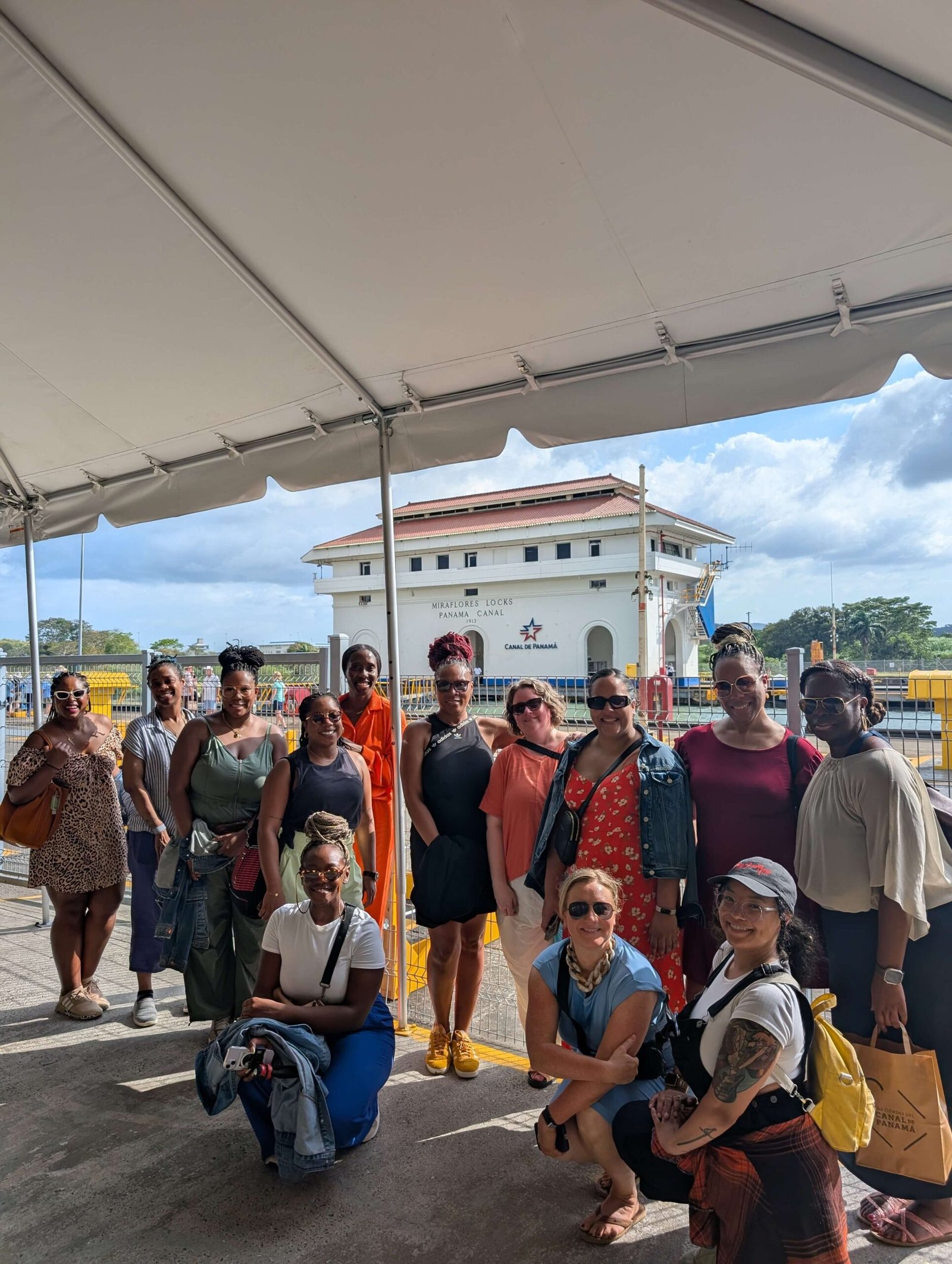
DAY 4: Emberá Indigenous Community Connection & Waterfall Hike

“I have heard them say that the work they are planning will bring things like progress and civilization and modernity to this place…as if the tools we have already created, the buildings we have already constructed, the land we have already cultivated, the society we have already organized is not, somehow, progress or civilization or modernity, but outside of those things. As if we are nothing more than primitive people with a few primitive huts that can be so easily moved.” – pg. 171
This was almost unanimously travelers’ favorite part of the trip. A big focus of our trip book “The Great Divide” by Cristina Henríquez is highlighting the indigenous communities along the Charges River that were displaced because of the building of the canal.
We visited the Emberá people who have always lived in the Darien rainforest. Starting in the 1960s, some Emberás emigrated to the Panama Canal watershed and established villages along the Chagres river and on the shores of Lake Gatun. Although they reside near the capital city, the Emberás in the Canal Watershed have kept their language, songs and dances, and above all, their reverence for the natural world. We started with a ride on a traditional piragua boat and a water fall hike.

After, we got a chance to learn about their culture through music, dance, and food. The community is known for its handmade crafts such as carved baskets, statues, and temporary tattoos made with the black ink of the jagua fruit. Living in a national park the Emberá are not allowed to cultivate the land for commercial purposes, so tourism is an important part of building a sustainable economy.
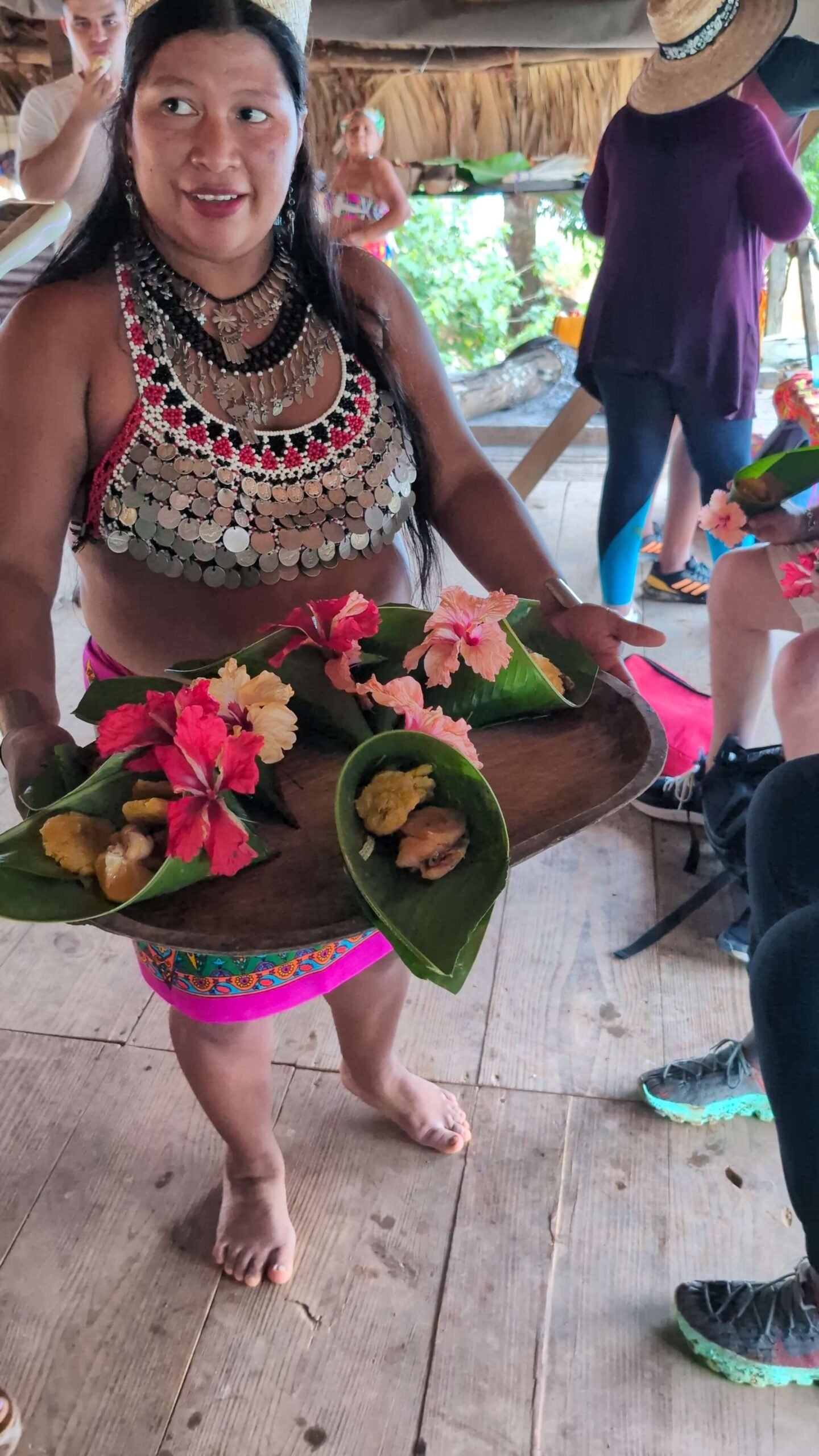
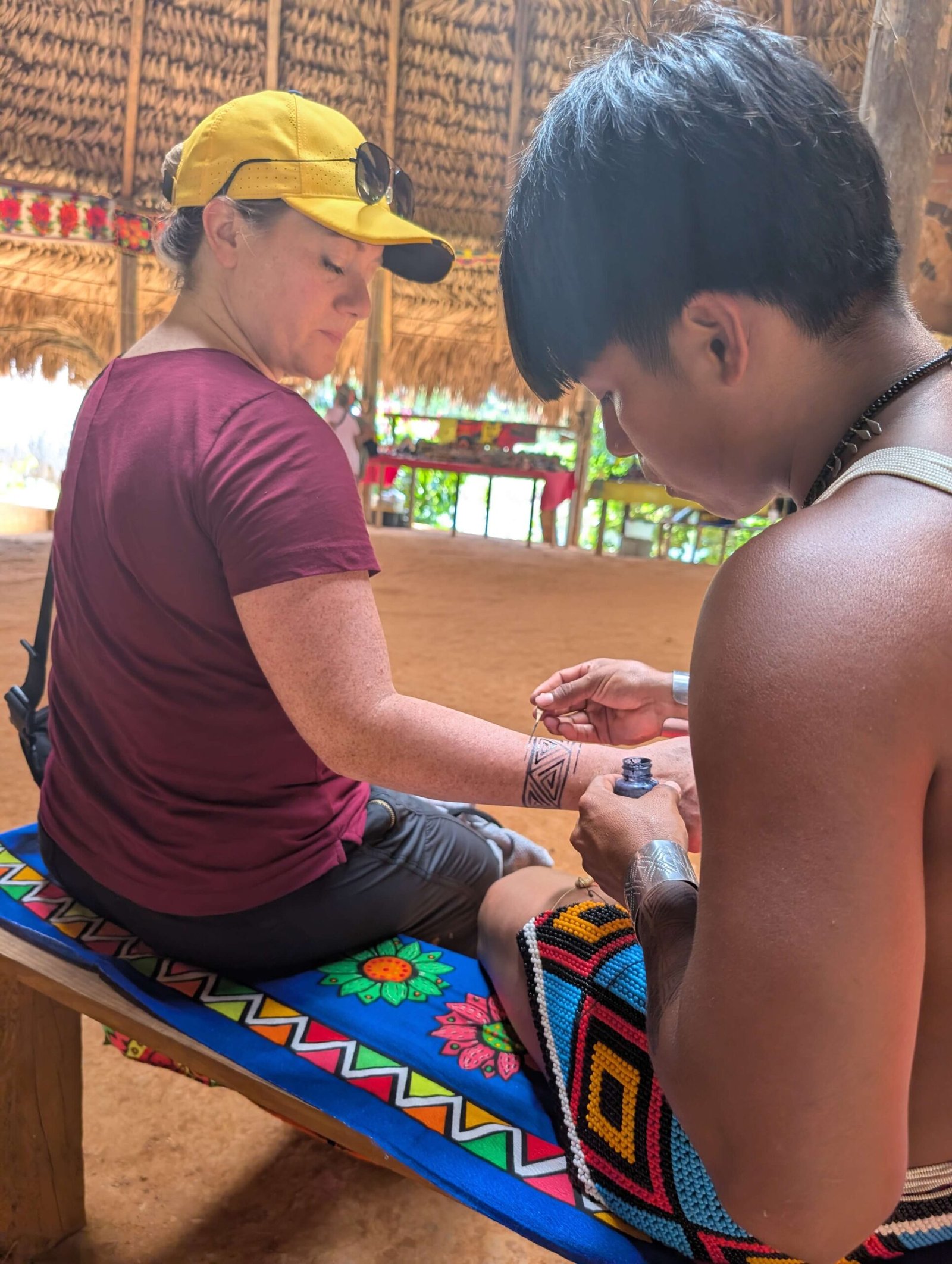
DAY 5: Island Bliss In Venas Azules & Closing Dinner
“He could show her the mangrove swamps whose roots had spread through the silt for thousands of years…he just wanted to keep being around her, and for the the simplest reason: All his life he had been lonely, but when he was with her he felt less alone” – pg. 312
We ended our trip relaxing and reading on our private catamaran. We started the day at Venas Azules, a pristine paradise nestled in the turquoise waters of the Caribbean Sea. Travelers took a small boat to the surrounding reefs and mangroves inspired by the above quote. The group swam, laughed, and danced at Playa Drake while enjoying a delicious Caribbean lunch onboard. Our boat playlist had something for everyone ranging from Afrobeats to yacht rock.
We had our closing dinner Cantina del Tigre, a restaurant focused on ceviche and reimagined Panamanian cuisine created by chef Fulvio Miranda from Panama’s Chiriquí Province. Listed at #40 on the World’s Best Restaurants list in 2024.
Closing
Big thanks to our on the ground partners Trip de Jenny and our guide Giovanni for an amazing trip. They brought our vision to life in beautiful ways while ensuring that our tourism dollars stayed in the local communities that we visited. Our travelers had a great experience. Hear why our travelers chose BOOKED Trips – from finding a community of like-minded women to the intentionality of each experience.
Interested in a future BOOKED Trips experience?
Check out our 2025 Accra and Cape Coast, Ghana experience, Marrakech, Fes, and the Sahara desert Morocco experience, or our upcoming trip to Cartagena, Colombia.

